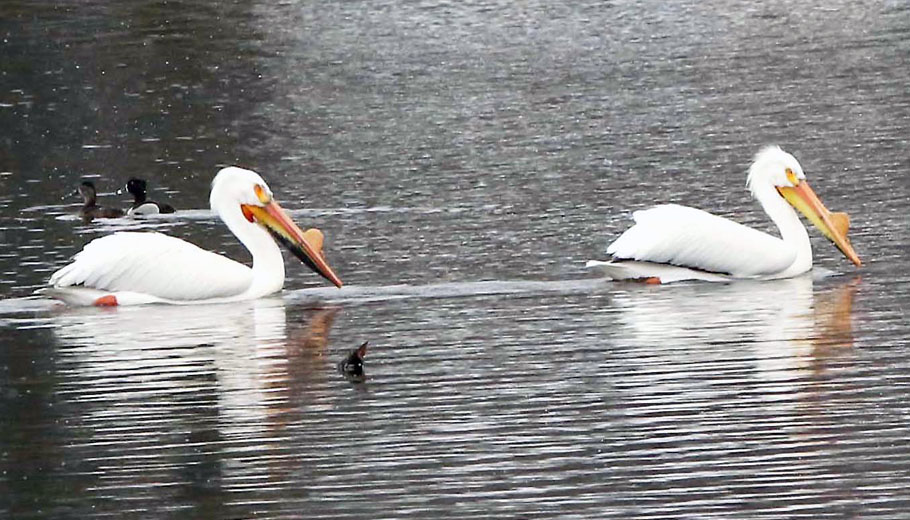
Large birds feeding on lake’s fish
By Holly Neumann
It has not been unusual over the years to see geese, ducks or the occasional swan on Lake Iola.
This year, however, white pelicans can be added to that list.
“During migration, they will appear in large numbers on many bodies or water, stopping over and feeding on a shallow-water fish species,” said Sumner Matteson, an avian ecologist with the state Department of Natural Resources. “Usually, they do not stay permanently.”
The large birds can weigh anywhere from 25 to 30 pounds and have a wingspan of 9 feet.
Pelicans have expanded in Wisconsin over the years, according to Matteson.
“For some unknown reasons, 30,000 pelicans abandoned their nests in the Dakotas,” he said. “Since then, their population has increased in our area.”
In 1994, Wisconsin had two nesting pairs in the Green Bay area, Matteson said.
“In 2005, the population inclined markedly, where we had about 1,000 nesting pairs,” he said. “By 2013, which was the last statewide survey of all the colonies, there were over 4,000 nesting pairs at eight different sites, in east, central and northern Wisconsin. This is a very dramatic increase.”
He estimated there are more than 8,000 nesting pairs within the state today.
White pelicans can consume up to 4 pounds of shallow-water fish daily. They do not dive beneath the surface and forage in groups and use their bills like a net to scoop up fish.
“One question I am always asked is what they eat,” Matteson said. “They like rough fish that are not desirable to the commercial fishing industry. They like minnows, carp and suckers. They also like crayfish and sometime salamanders.”
If pelicans remain on the lake after a month, they have most likely found a place to nest, Matteson said.
“They like to nest on islands, cattail peninsulas or extensive marshy areas,” he said. “They usually only lay two eggs that incubate for 30 days.”
Known predators of the white pelican include fox, mink, raccoons, coyotes and anything that can access their nests or eggs.
“They are not dangerous to people,” Matteson said. “They do not attack. They are fearful of any potential predators and will fly away if you get too close.”
